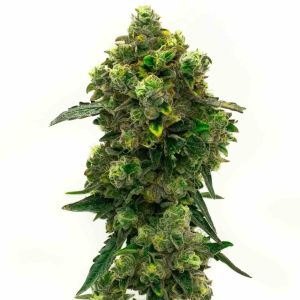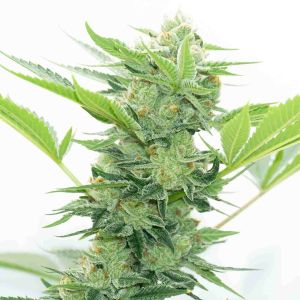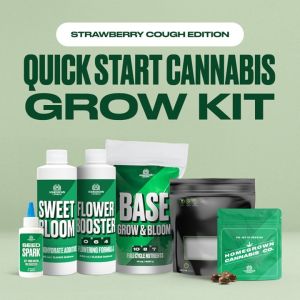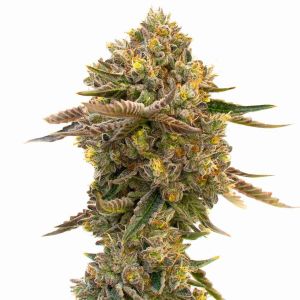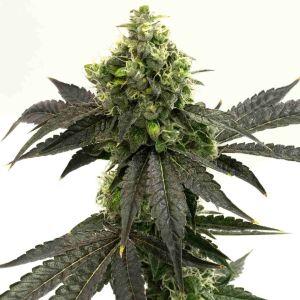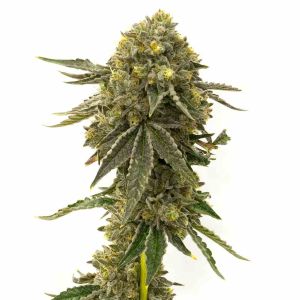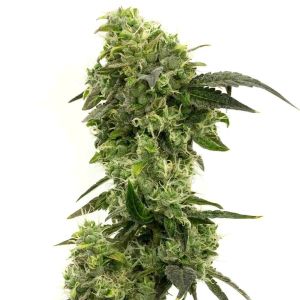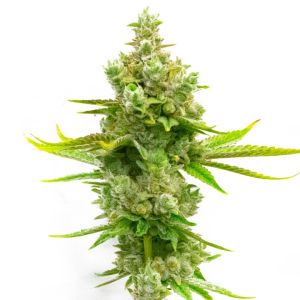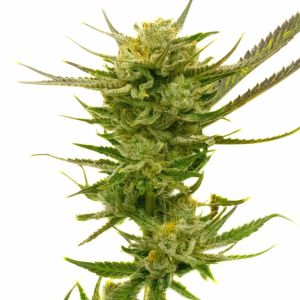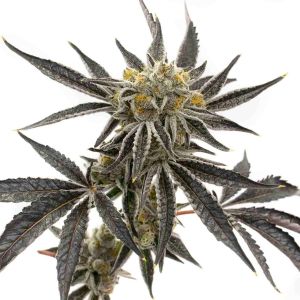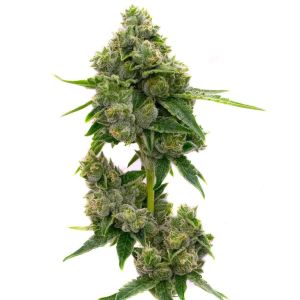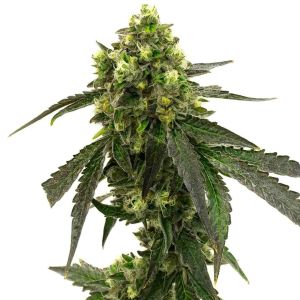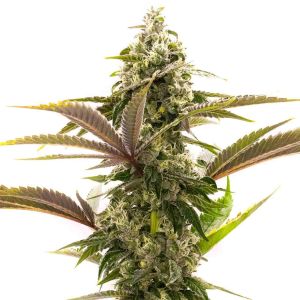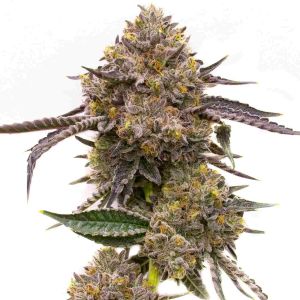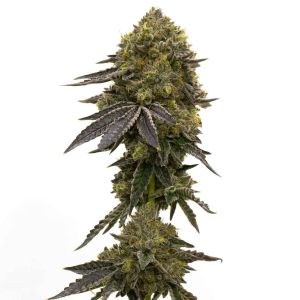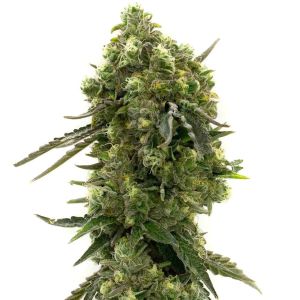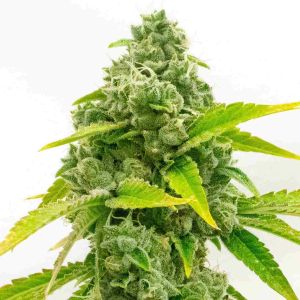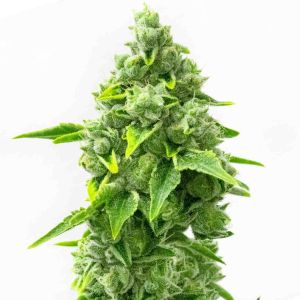Marijuana Seeds for Beginners: What to Look For
Good marijuana seeds for beginners are like training wheels for your green thumb — sturdy, forgiving, and eager to grow even if you make a few rookie mistakes. The best ones come from strong, stable genetics that can shrug off a missed watering or a bit of extra light without throwing a tantrum.
They resist pests, mold, and general neglect with stoic patience, which means you get to learn the ropes without watching your cannabis plants crumble at the first sign of imperfection. Think of them as the houseplants of the marijuana world: resilient and reliably rewarding.
Choosing the Right Seed Type and Growing Setup
When you start growing cannabis, simplicity is the name of the game. Beginner-friendly seeds grow fast, stay compact, and don’t demand a science degree in nutrient balance.
Feminized and autoflowering seed types are clear winners here — they skip the drama of light schedules and gender guessing, making the whole process far more “set it and forget it.” These weed seeds practically grow themselves while you sit back and marvel at how green your thumbs are getting.
And of course, even the toughest seed needs the right home.
Indoor growers should go for compact, discreet plants that thrive under modest lights, while outdoor growers can pick hardy strains built to weather unpredictable skies. Match your cannabis seeds to your setup and your patience level, and you’ll be harvesting in no time — with a smile, a stash, and the satisfying sense that you just leveled up in life.
Good beginner marijuana seeds combine:
- Durable genetics (forgiving and resistant)
- Simple growth patterns (fast, compact, low-maintenance)
- Helpful seed types (autoflowering and/or feminized)
- A good fit for your space and climate
Characteristics of the Best Pot Seeds For Beginners
The best beginner cannabis seeds make the learning curve smoother — they have a forgiving nature, grow steadily, and reward you with a healthy harvest even if conditions aren’t perfect. Use this checklist to know exactly what to look for when buying your first seeds:
- Compact size and easy plant structure: Short, bushy plants are easier to manage indoors and less likely to outgrow your space. They also require less pruning and training than tall, sprawling sativas.
- Strong resistance to pests, mold, and stress: Beginner-friendly strains are naturally hardy — they can handle overwatering, temperature swings, or minor nutrient issues without dying off or developing mold.
- Simple feeding and care requirements: Choose strains that thrive on basic cannabis nutrients and don’t need precise feeding schedules. They’re more forgiving if you overfeed or skip a watering.
- Shorter flowering time and quick turnaround: Fast-flowering plants go from seed to harvest in as little as 8–10 weeks. This lets you see results quickly and build experience faster.
- Consistent yield potential: Good beginner strains produce satisfying yields with minimal effort — rewarding your time and effort without needing expert-level optimization.
- Suitable for your grow setup (indoor or outdoor): Pick seeds that match your space and local climate. Some strains love warm, sunny weather outdoors, while others are bred for small tents or cooler environments.
- Stable genetics and strong germination rates: Buy from reputable breeders with proven, stable genetics. Quality seeds sprout reliably and produce consistent, healthy plants every time.
- Responds well to Low Stress Training (LST): Some strains naturally adapt better to gentle training methods like bending or tying down branches. These LST-friendly strains let you shape plants for better light distribution and yields without damaging them — a perfect skill-building technique for beginners.
What makes a marijuana seed beginner-friendly?
New growers often make mistakes - overwatering, inconsistent light cycles, or nutrient overload. Beginner seeds are selected for their resilience, simplicity, and genetic stability. Here's what to look for:
-
Autoflowering seeds: These strains bloom on their own, regardless of light schedules, meaning no need to manage 12/12 cycles.
-
Feminized seeds: Eliminate male plants and ensure every seed has the potential to flower and produce buds.
-
Fast flowering seeds: Many easy strains go from seed to harvest in under 10 weeks.
-
Mold & pest resistance: Beginners may lack humidity control or air flow - these strains are built to survive.
These features make it easier to grow at home with minimal gear and less experience.
Why Growing Weed Can Save You Serious Green
For regular users, cannabis cultivation is like cutting out the middleman and getting VIP access to your own supply. After the initial setup costs, growing cannabis quickly becomes cheaper than buying it — no retail mark-ups, no taxes, just buds that practically pay for themselves.
Beginner growers also get more than savings: they get control. You decide what goes into your plants, how potent they are, and when you harvest. It’s predictable, personal, and financially smart — turning every grow from an expense into an investment in your own green independence.
Caveats & Things to Factor In
- Initial setup cost: You’ll need space (indoor or outdoor), lights/ventilation if indoors, grow medium, nutrients, etc. Some sources estimate the basic setup can run from a few hundred dollars (or equivalent) to much more.
- Time and labour: Growing takes effort — plant care, monitoring environment, harvesting, drying/curing. The “cost” of your time matters (especially if you value labour).
- Yield variability/risk: If you’re new to growing, mistakes can reduce yield or quality, which reduces the financial benefit.
- Legal/regulatory costs & risks: Depending on your location, there may be legal restrictions, licensing, or risk of penalties. These factors can add costs or risks that alter the financial calculation.
- Ongoing consumption vs. harvest timing: If you consume very little, the cost savings may not offset the setup cost quickly. If you consume a lot, the savings tend to scale better.
- Space, utilities, and upkeep: Indoor grows may increase electricity (lights/fans), water, etc. These operating costs reduce the net savings.
Best Seed Types for Beginners
When you’re just starting out, the world of cannabis genetics can feel like a jungle — but finding the easiest cannabis strains doesn’t have to be a wild chase. The best beginner seeds are bred to make success practically foolproof, helping you learn the art of growing cannabis without all the stress.
Autoflowering Seeds
Autoflower weed seeds are every beginner grower’s dream because they take the drama out of the flowering phase. Instead of waiting for perfect light coverage cues to kick things off, these clever little plants just know when it’s showtime. They flip from veg to bloom automatically — no need to play sun god with your grow lights. That means fewer mistakes, less guesswork, and a whole lot more time to sit back and feel smug about your green thumb.
Even better, autoflowers come with a shorter growth cycle and an average flowering time that’s fast enough to make impatient growers weep with joy. In just a few weeks, you can go from seed to harvest without a hitch, learning the ropes while your plants practically raise themselves. For anyone starting out in cannabis cultivation, autoflowering seeds are the shortcut to success — like growing on easy mode, but with real rewards at the end.
Feminized Seeds
Feminized weed seeds are a beginner grower’s best friend because they take all the guesswork — and heartbreak — out of the growing game. Instead of rolling the genetic dice and ending up with unwanted male plants that waste space and time, feminized seeds guarantee a garden full of female plants ready to produce buds in all their sticky, aromatic glory. It’s like buying a box of chocolates and knowing every single one has the good filling.
While most autoflowers already make life easy with their hands-off light cycles, feminized seeds go one step further by ensuring that every plant you nurture through the flowering stage actually rewards you with smokable, resin-packed results. No pollen, no surprises — just pure, predictable pleasure for anyone taking their first steps into marijuana cultivation.
Should You Go for Indica or Sativa Strains?
Beginner growers should start with indica cannabis seeds. Indicas are compact, quick to flower, and much easier to manage — perfect for learning the ropes without constant tweaking or drama. They forgive the little mistakes that often happen when you’re just growing cannabis for the first time.
Sativas, on the other hand, are tall, temperamental, and take longer to mature. Great for experienced growers — but for beginners, sticking with chill indicas keeps things simple, steady, and successful.
Environmental Conditions to Start Growing Cannabis Seeds
When it comes to growing your first cannabis plants, the big question is: should they be grown indoors or under the open sky? Both paths can yield great results — it just depends on your space, budget, and patience.
Growing Indoors
Indoor growing is all about control. You manage the light, temperature, and airflow, so your plants stay cozy and consistent year-round. It’s ideal for beginners who want fewer surprises — no rainstorms, no pests, no neighbors snooping. Compact indica or autoflower strains are perfect here since they don’t need much space or light tweaking.
Outdoor Cultivation
Growing outdoors is cheaper and more natural — just plant, water, and let the sun do the work. You’ll get bigger plants and yields, but also more challenges: pests, weather swings, and seasonal limits. Go for hardy, pest-resistant autoflowers that can handle a little chaos.
Beginner Cannabis Grower Mistakes to Avoid
Starting your growing journey is exciting, but a few rookie errors can easily derail a successful harvest. Here’s what to watch out for when you grow weed for the first time:
- Ignoring pH Levels – If the pH is off, your plants can’t absorb nutrients properly. Aim for 6.0–7.0 in soil and 5.5–6.5 in hydro.
-
Choosing the Wrong Strain – Skip high-maintenance genetics. Go for tough beginner seeds that handle mistakes well and finish fast.
- Poor Airflow – Stale air invites mold and pests. Keep fans moving and humidity in check.
-
Harvesting Too Early – Patience pays. Wait for those cloudy, amber trichomes before cutting for full potency.
-
Not Taking Notes – Each grow teaches you something new. Track what works and what doesn’t to keep improving.
Cannabis Growing Tips for Beginners
1. Keep the cultivation process simple
Beginner growers don’t need to reinvent the wheel — start with easy, resilient strains like autoflowers or feminized seeds. They remove the guesswork from light cycles and gender sorting, making your first grow smooth and stress-free.
2. Master your environment
Whether you’re growing indoors or braving outdoor conditions, consistency is everything. Indoors, use LED lights for steady, energy-efficient growth and keep temps around 68–79°F (20–26°C). Outdoors, pick a sunny, well-ventilated spot and mind your growing season — warmth and daylight are your best friends.
3. Feed lightly and water wisely
Overfeeding and overwatering are rookie traps. Use a basic nutrient mix, stick to a routine, and let the top layer of soil dry before watering again. Think balance, not overcare.
4. Train gently, harvest patiently
A touch of low-stress training (LST) helps shape your plant and improve light coverage without shocking it. And when harvest time nears, don’t rush it — waiting for those trichomes to turn milky pays off in potency and flavor.
5. Keep it clean, keep it calm
A tidy grow space means fewer problems. Regular checks, clean tools, and calm observation will do more for your plants than constant tinkering.
Best marijuana seeds for beginners (Updated for 2025)
Here are some of the most beginner-friendly strains on the market - all chosen for their ease of growth, quick yields, and forgiving nature.
- Northern Lights Autoflower: One of the most forgiving strains in cannabis history. It's compact, resists mold, and finishes quickly - often in under 9 weeks.
- Zkittlez Autoflower: Fruity, fast, and incredibly low-maintenance. Perfect for indoor setups with limited vertical space.
- Bruce Banner Autoflower: A powerhouse hybrid with vigorous growth and impressive yields. Handles training well, making it ideal for growers looking to push their skills.
- White Widow Autoflower: Easy to grow indoors, naturally resistant to mold and pests, and grows in almost any climate.
- Gorilla Glue #4 Feminized: This strain tolerates stress well and recovers from overfeeding or watering mistakes.
- Blackberry Autoflower: This strain thrives in controlled environments and is a great first sativa for beginners wanting a cerebral experience.
- Green Crack Autoflower: Uplifting and energetic, this strain finishes fast and is ideal for stealth grows.
- Do-si-dos Feminized: Potent, resilient, and easy to manage. Produces dense, frosty buds with minimal fuss - an excellent choice for first-time photoperiod growers.
- Purple Sunset Autoflower: Low-maintenance and visually striking, this variety resists common grow issues and thrives without heavy feeding or training.
- LSD Autoflower: Psychedelic potency meets effortless cultivation. Flowers quickly, stays compact, and performs well without complex care.
Step-by-Step Growing Tips for Beginners
Growing cannabis for the first time can feel intimidating — but with the right approach, even complete beginners can produce healthy, high-quality plants. Here's a no-fluff guide with actionable steps, common pitfalls to avoid, and quick tips to grow with confidence.
Beginner Grower Checklist: From Seed to Harvest
Use this simple roadmap to guide your first grow:
- Choose beginner-friendly seeds (autoflower or feminized, indica-dominant)
- Germinate seeds using the paper towel or glass-of-water method
- Plant sprouted seeds in light, well-draining soil
- Place under 18–24 hours of light daily (LEDs or sunlight)
- Water only when top inch of soil is dry
- Monitor temperature (70–85°F) and humidity (40–70%)
- Begin feeding nutrients after 2–3 weeks (light dosages
- Watch for flowering (autoflowers start automatically)
- Harvest when trichomes are milky/cloudy (use a jeweler's loupe)
- Dry and cure buds slowly for smooth flavor and potency
FAQs
What Is the Easiest Marijuana to Grow for Beginners?
The easiest cannabis strains for new growers are autoflowering seeds and feminized seeds, both known for being beginner friendly and resilient. These cannabis seeds for beginners automatically enter the flowering stage and grow into female plants that produce buds without complex light schedules. Compact hybrids like Northern Lights or Blue Dream thrive in outdoor conditions or under LED lights, offering more control and reliable results across humid climates and cooler climates.
How Long Does It Take for a Marijuana Seed to Start?
Most cannabis seeds sprout in 2–7 days, with flowering time usually ranging from 8–12 weeks depending on cannabis strains and setup. Autoflowering seeds are ideal for beginner friendly growers because their flowering time isn’t tied to light exposure, while feminized seeds of sativa strains may need a slightly longer flowering time before becoming fully mature. Matching your seed type to your local climate ensures consistent results.
Do You Need to Soak Marijuana Seeds Before Planting?
Yes, many growers soak cannabis seeds for beginners for 12–24 hours to trigger germination. This softens the seed shell so sprouts emerge faster under steady warmth and not light exposure. After soaking, plant promptly to prevent damage from excess moisture. A simple soak helps cannabis seeds sprout evenly and gives beginner friendly growers a stronger start with less risk.
What Marijuana Seeds Do I Need to Grow?
For the best results, choose feminized seeds or autoflowering seeds, as both simplify the process for beginner friendly growers. These cannabis seeds for beginners grow into female plants that produce buds, avoiding the need to remove male plants during the flowering stage. Select cannabis strains suited to your local climate and setup—sativa strains offer uplifting effects, while indicas perform better in humid climates and cooler climates.




